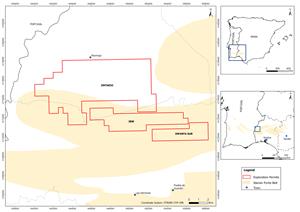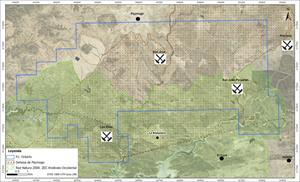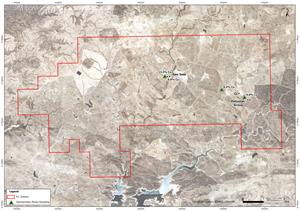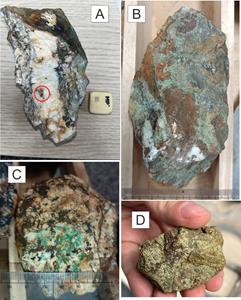
Emerita Has Been Granted the “Ontario” Exploration Permit Adjacent to its Iberian Belt West Project; Hosts Several Historic Producing Mines
/EIN News/ -- TORONTO, Feb. 18, 2025 (GLOBE NEWSWIRE) -- Emerita Resources Corp. (TSX-V: EMO; OTCQB: EMOTF; FSE: LLJA) (the “Company” or “Emerita”) is pleased to announce that the Ministry of Industrial Policy and Energy of Huelva, Andalusia has granted Emerita the exploration permit for the Ontario Property (Figure 1) (“Ontario”). This permit adds an additional 5,573.23 hectares to Emerita’s wholly owned Iberian Belt West project (“IBW” or the “Project”) increasing the Project area from 2,394.1 hectares to 7,967.31 hectares. IBW hosts three Volcanogenic Massive Sulphide (VMS) deposits, two of which contain NI 43-101 compliant mineral resource estimates (“MRE”), La Romanera and La Infanta (see Company press release dated May 23, 2023), and the third, El Cura, is currently being drilled for an updated MRE on IBW expected to be complete in Q1-2025.
Ontario is located north and west of La Romanera, adjacent to the IBW property boundaries (Figure 1). The new exploration permit allows Emerita to begin exploration and does not require further environmental department or municipal approvals. The Ontario exploration permit is granted for an initial period of three years and can be renewed for subsequent additional periods.
Significance of Ontario Grant
Ontario represents a sizable addition to the Company’s substantial land position in the Iberian Pyrite Belt, host to the largest concentration of VMS deposits on Earth, with 1.7Bt of massive sulfides endowed with at least 28Moz Au, 1.5Boz Ag, 14.6Mt Cu, 34.9 Mt Zn, and 13.0 Mt Pb metal (Leistel et al., 1998, “The volcanic-hosted massive sulphide deposits of the Iberian Pyrite Belt”). Some key aspects of the Ontario permit include:
- Ontario more than triples the land package around the Company’s core IBW project, host to La Romanera, El Cura and La Infanta deposits.
- Historic high-grade mines including San Jose, Peñuelas, Los Silos complex occur on the Ontario Property (see Figure 2).
- Emerita’s grab samples from historic waste dumps contain semi-massive sulfide mineralization assaying up to 13.2% Cu (see Table 1).
- Any deposits discovered at Ontario are expected to be close enough to be processed at a plant at IBW should it be developed.
Identified Prospects
Ontario contains numerous historic workings dating from Roman times to mid-20th Century. Less than two kilometers to the west of Emerita’s La Romanera deposit is the Roman silver mines of Los Silos (Figure 2). The first written record of these mine workings was made in 1888 by mining engineer Joaquin Gonzalo y Tarin in his geographical and mining survey of the Huelva province. Therein was noted 40 ancient shafts and several drifts along two mineralized zones that reportedly graded between 1% to 11% copper during mining operations in 1880. These grades have not been independently verified.
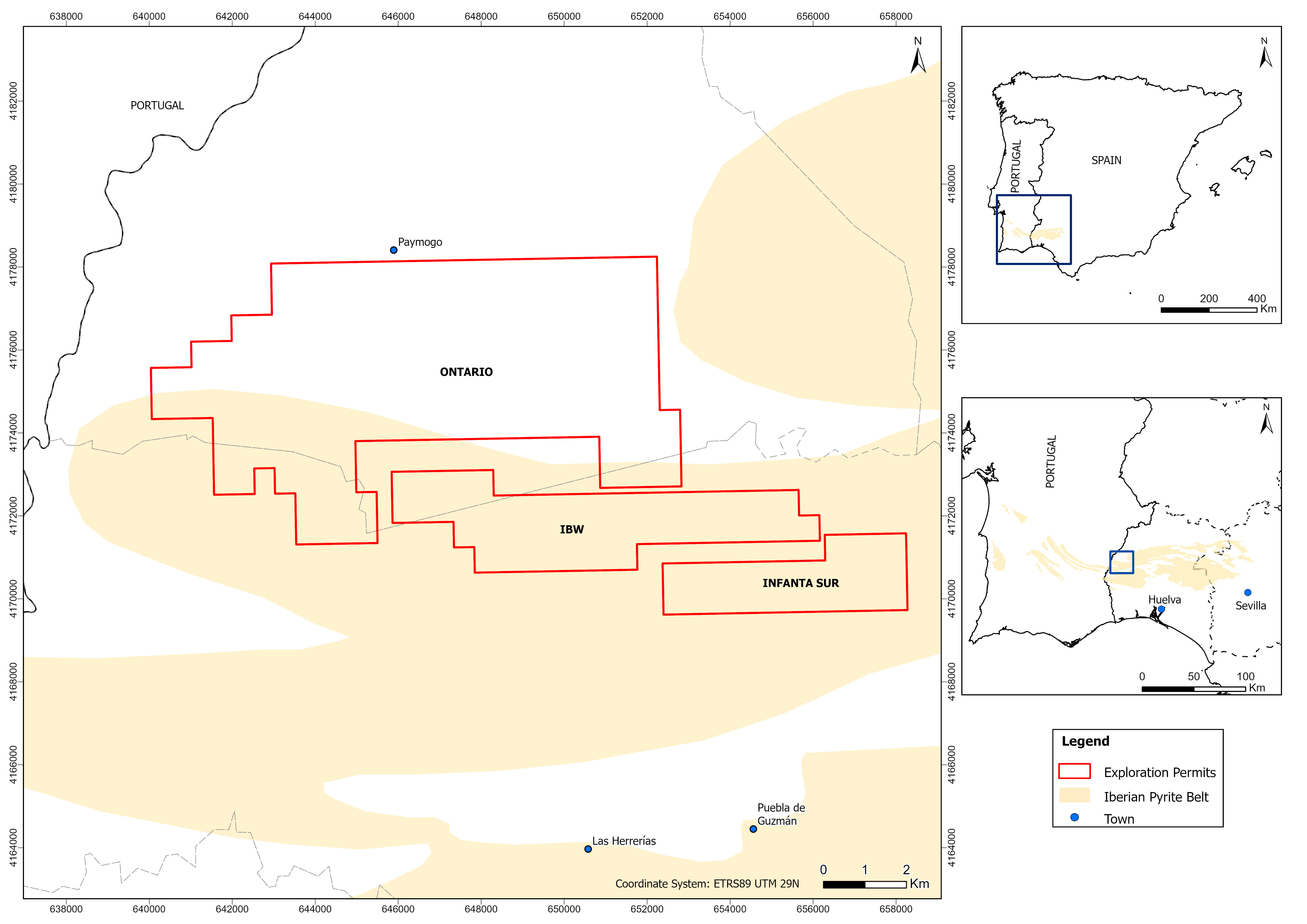
Figure 1: Location of Emerita’s permits in red outline within Huelva Province and the Iberian Belt.
View Figure 1 here: https://www.globenewswire.com/NewsRoom/AttachmentNg/797b294e-3385-4ee5-b51e-7635e30d2df7
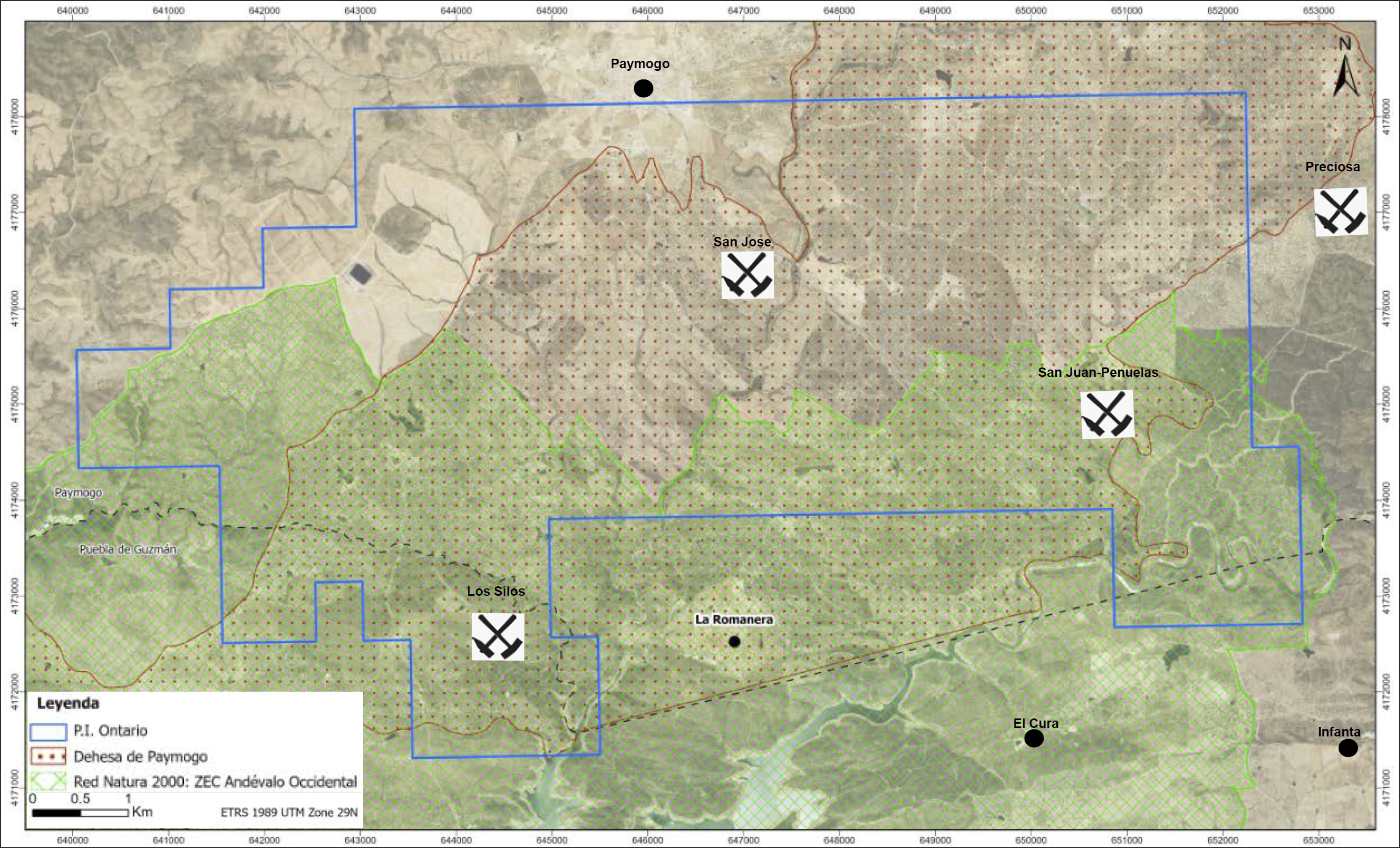
Figure 2: Historic mining operations located on the Ontario permit.
View Figure 2 here: https://www.globenewswire.com/NewsRoom/AttachmentNg/18dc1d7c-32c3-4323-a92d-81009383345a
To the north of La Romanera are the historic mines of San Jose and the Peñuelas Group, which outcrop amidst an extensive zone of younger sedimentary cover rocks. These cover rocks obscure the potential of much of the Ontario permit except in areas where high silicification and mineralization of the underlying host rocks are exposed in windows through the cover. The San Jose and Peñuelas prospects are examples of two such “windows” of exposed mineralized rock. Much of the Ontario claims have never been subject to modern geophysical exploration techniques that are now common practice in successfully exploring and discovering “blind” deposits worldwide.
At San Jose, three exploratory shafts were excavated in the late 1800’s along a 300m strike length of high-grade quartz-chalcopyrite veining. As part of a regional evaluation by Asturiana de Zinc, S.A. in the 1970’s, dump samples returned 8.33% Cu (internal report, 1971, AZSA; see Emerita’s own results in Table 1).
Peñuelas Group workings developed between the late 19th and early-20th Century included four shafts with three sublevels developed from the main shaft and an average mine grade of 15% Cu was reportedly extracted from two parallel quartz-chalcopyrite veins of between 1.5m and 2.0m width. In February 1945, during the final period of exploitation, the provincial inspector of mines evaluated the workings and took samples grading at 15.14% Cu; 29.46% Cu; 12.38% Cu; 29.46% Cu; 3.04% Cu; and 38.36% Cu (Pinedo Vara, 1963, “Pirites de Huelva”).
Given the location of the San Jose and Peñuelas as well as their stockwork type mineralization, it is conceivable that these prospects could be the displaced roots of the massive sulfide deposits similar to Emerita’s IBW deposits further to the south.
Just outside of the northeast corner of the Ontario permit are the Roman-era shafts and slag heaps of the Preciosa copper mine. Little has been recorded in the modern literature on this deposit, but various local mineral collections include samples of quartz-malachite-tetrahedrite. State geological maps indicate that the mineralization of the Preciosa workings is located along an antiformal structure that trends directly toward the Ontario claim boundary approximately 1,500m to the west-southwest, before plunging under the younger cover rocks.
A qualified person, as defined in National Instrument 43-101, has not done sufficient work on behalf of Emerita to classify any historical grades, production or results reported above as current mineral resources or mineral reserves. The historical data should not be relied upon.
Emerita Prospecting Results
District-scale reconnaissance and preliminary evaluation in the vicinity of the Company’s IBW claims has included consultation with landowners at some of the historic Ontario mines. Although the underground workings of San Jose and Peñuelas could not be accessed, historic waste dumps were available for sampling. Table 1 shows the results of Emerita samples of semi-massive sulfide mineralization assayed 13.2% Cu confirming the grades of AZSA sampling at San Jose as noted above. The observed malachite-dominant mineralization at Peñuelas assayed 4.6% Cu and was likely considered to be below the cut-off grade during the mid-20th Century mining period and was not the supergene chalcocite-covellite ore that was the focus of the historic mining operations. Figure 3 shows the location of where the samples were taken on the property. Figure 4 provides photos of the samples. In-situ mineralization of this sort will require drill testing in the future. The samples collected by Emerita are grab samples of mineralized rock and grades of these samples are not necessarily representative of bulk grade of a potential mineralized zone or deposit should one be discovered.
Table 1. Grab samples taken near historic mines at available waste dumps
| Assays | |||||||
| Sample ID | Easting | Northing | Cu_% | Pb_% | Zn_% | Au_ppm | Ag_ppm |
| D9013626 (Peñuelas) | 651019.6 | 4175188 | 4.55 | 0.06 | 0.040 | 0.008 | 9.75 |
| D9013627 (San Jose) | 647154.9 | 4176189 | 0.63 | 0.01 | 0.002 | 0.005 | 0.53 |
| D9013629 (Peñuelas) | 649914.5 | 4175563 | 0.5 | 0.003 | 0.002 | 0.0025 | 1.24 |
| D9013630 (San Jose) | 647158.8 | 4176218 | 13.2 | 0.038 | 0.020 | 0.07 | 6.69 |
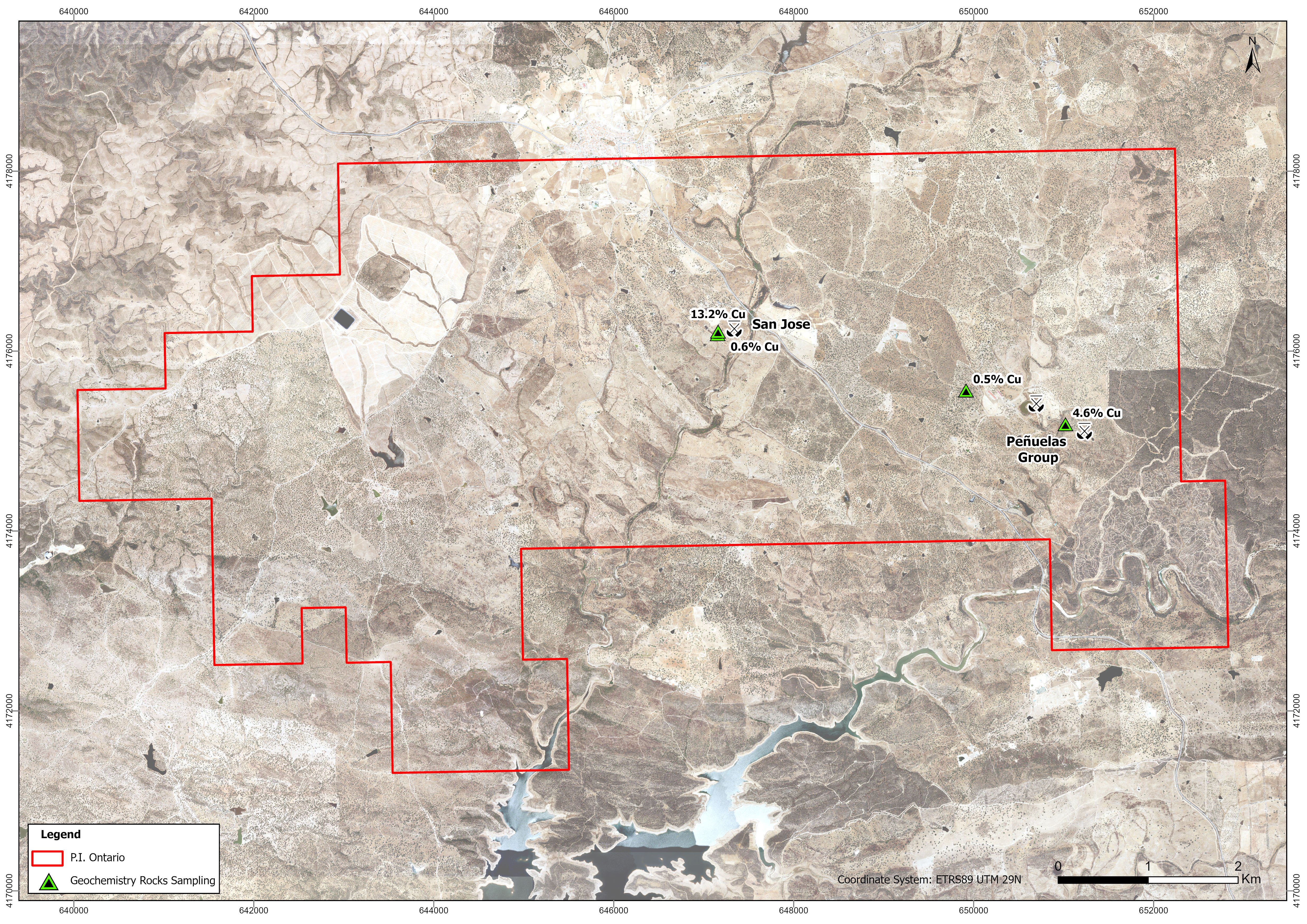
Figure 3. Location of the samples collected on the Ontario property. Results are shown in Table 1.
View Figure 3 here: https://www.globenewswire.com/NewsRoom/AttachmentNg/9a25588e-ffaf-4914-8d7c-6baef06af7a0
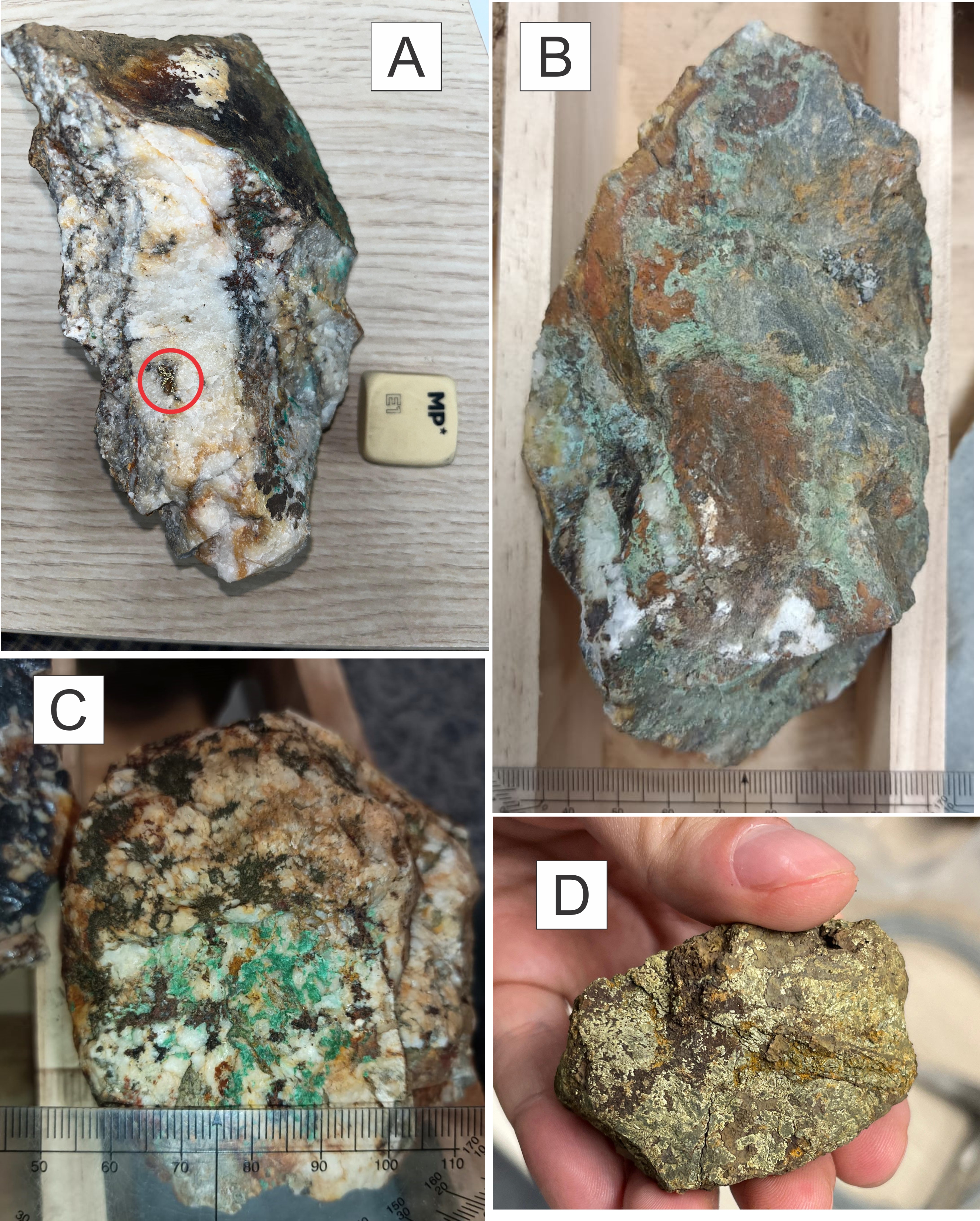
Figure 4. Photographs of the samples collected on the Ontario property with results shown in Table 1. A: Sample D9013626 from Peñuelas containing 4.55% Cu exhibiting pyrite and chalcopyrite with secondary copper within a quartz vein; B: San José sample D9013627 containing 0.63% Cu exhibiting secondary copper oxide (malachite) within a quartz vein; C: D9013629 containing 0.50% Cu in a quartz vein with associated secondary copper oxide (malachite); D: San José sample D9013630 containing 13.2% Cu in semi-massive sulphide dominated by chalcopyrite
View Figure 4 here: https://www.globenewswire.com/NewsRoom/AttachmentNg/26fd9a66-ed68-4b80-a887-47f3f10b8d59
Joaquin Merino, P.Geo., President of Emerita, states “Emerita’s already-known resources at Romanera, La Infanta demonstrate the fertility of the ore-forming systems in the area. The additional showings of Los Silos, San Jose and Peñuelas within the Ontario grant indicate the significant additional potential within this exploration license. The grab samples collected barely scratch the surface of this newly opened-up area yet clearly indicate that the processes that formed the resources within the Company’s IBW project may easily extend into the Ontario tenement.”
Qualified Person
Scientific and technical information in this news release has been reviewed and approved by Joaquin Merino, P.Geo., who is a “Qualified Person” as defined by National Instrument 43-101 – Standards of Disclosure for Mineral Projects (“NI 43-101”) and President of the Company.
About Emerita Resources Corp.
Emerita is a natural resource company engaged in the acquisition, exploration, and development of mineral properties in Europe, with a primary focus on exploring in Spain. The Company’s corporate office and technical team are based in Sevilla, Spain with an administrative office in Toronto, Canada
For further information, contact:
Ian Parkinson
+1 647 910-2500 (Toronto)
info@emeritaresources.com
www.emeritaresources.com
Cautionary Note Regarding Forward-looking Information
This press release contains “forward-looking information” within the meaning of applicable Canadian securities legislation. Forward-looking information includes, without limitation, statements regarding the prospectivity of the IBW Project and the Ontario property, the mineralization of the IBW Project and Ontario property, the economic viability of the IBW project, the Company’s ability to establish an updated mineral resource estimate for IBW, the Company’s future exploration plans and the Company’s future plans. Generally, forward-looking information can be identified by the use of forward-looking terminology such as “plans”, “expects” or “does not expect”, “is expected”, “budget”, “scheduled”, “estimates”, “forecasts”, “intends”, “anticipates” or “does not anticipate”, or “believes”, or variations of such words and phrases or state that certain actions, events or results “may”, “could”, “would”, “might” or “will be taken”, “occur” or “be achieved”. Forward- looking information is subject to known and unknown risks, uncertainties and other factors that may cause the actual results, level of activity, performance or achievements of Emerita, as the case may be, to be materially different from those expressed or implied by such forward-looking information, including but not limited to: general business, economic, competitive, geopolitical and social uncertainties; the actual results of current exploration activities; risks associated with operation in foreign jurisdictions; ability to successfully integrate the purchased properties; foreign operations risks; and other risks inherent in the mining industry. Although Emerita has attempted to identify important factors that could cause actual results to differ materially from those contained in forward-looking information, there may be other factors that cause results not to be as anticipated, estimated or intended. There can be no assurance that such information will prove to be accurate, as actual results and future events could differ materially from those anticipated in such statements. Accordingly, readers should not place undue reliance on forward-looking information. Emerita does not undertake to update any forward-looking information, except in accordance with applicable securities laws.
NEITHER TSX VENTURE EXCHANGE NOR ITS REGULATION SERVICES PROVIDER (AS THAT TERM IS DEFINED IN THE POLICIES OF THE TSX VENTURE EXCHANGE) ACCEPTS RESPONSIBILITY FOR THE ADEQUACY OR ACCURACY OF THIS RELEASE

Figure 1
Location of Emerita’s permits in red outline within Huelva Province and the Iberian Belt.
Figure 2
Historic mining operations located on the Ontario permit.
Figure 3
Location of the samples collected on the Ontario property. Results are shown in Table 1.
Figure 4
Photographs of the samples collected on the Ontario property with results shown in Table 1. A: Sample D9013626 from Peñuelas containing 4.55% Cu exhibiting pyrite and chalcopyrite with secondary copper within a quartz vein; B: San José sample D9013627 containing 0.63% Cu exhibiting secondary copper oxide (malachite) within a quartz vein; C: D9013629 containing 0.50% Cu in a quartz vein with associated secondary copper oxide (malachite); D: San José sample D9013630 containing 13.2% Cu in semi-massive sulphide dominated by chalcopyrite
Distribution channels: Media, Advertising & PR, Mining Industry ...
Legal Disclaimer:
EIN Presswire provides this news content "as is" without warranty of any kind. We do not accept any responsibility or liability for the accuracy, content, images, videos, licenses, completeness, legality, or reliability of the information contained in this article. If you have any complaints or copyright issues related to this article, kindly contact the author above.
Submit your press release


